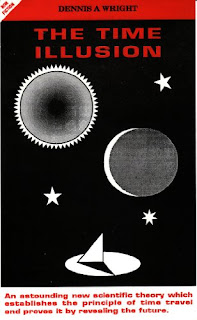Quantum Entanglement in the bio-mass
Quantum entanglement was called
by Einstein, “Spooky at a distance connection” and is a phenomenon by which two
or more objects share an unseen link, bridging the space between them, the
phenomenon was first described in particle physics where matched pairs were
found to react simultaneously even when separated by large distances. Similar
linking has been found in polarised light waves and some chemical experiments
where atoms appear to retain memory of previous states. Examples of some simple
quantum experiments are listed in Gary Zukav’s book “The Dancing Wu Li
Masters”.
A group
of researchers reported in the December 2nd 2011 issue of Science that they managed to entangle the quantum states of
two diamonds separated by 15 centimetres. Entanglement
experiments on physical systems usually take place in highly controlled
laboratory setups—entangling, say, a pair of isolated atoms cooled to nearly
absolute zero. In the new study, researchers from the University of Oxford
Quantum
linked objects are being used in the construction of new high speed computers
and in communications equipment. Birmingham
University
We are beginning to understand
quantum links in inanimate objects but there is evidence that similar
connections may be found in living matter. By 1900 renowned physicist Sir
Jagadis C. Bose had developed sophisticated monitoring devices, such as the
crescograph, to record plant reactions and to substantiate theories of plant
consciousness.
In the 1960s and early 1970s, experiments
on plant consciousness increased and Russian scientists at the Timiryazev Academy
supported Bose's findings with their own research as did Dr. Paul Blondel, of Blake College
in San Diego .
Cleve Backster, a polygraph specialist, hooked plants up to lie detectors,
applied physical, emotional, and psychic stimuli to them, and monitored their
reactions. In the Soviet Union , V.N. Pushkin
and V.M. Fetisov supported Backster's research with similar experiments of
their own using an encephalograph.
Experiments indicated that plants
with no visual or auditory organs are acutely aware of their surroundings.
Plants were even able to distinguish people who had damaged other plants in
their presence and in one experiment a plant reacted to a person who had placed
live prawns in boiling water in the same room. The plant was able to respond
when that person entered the room after a period of absence, it remembered the
person. Plant awareness may well be due to quantum connections in the chemical
components of the plant’s cells.
No serious research has been
performed to establish quantum connections in living things but if plant
reactions can be demonstrated to reflect quantum coupling it may mean that
other unexplained phenomena are the result of links at the quantum level. A lot
of unexplained and seemingly impossible events are currently dismissed out of
hand by the scientific community but may well be the result of quantum
entanglement in biological entities. It would open whole new fields of research
if occurrences such as premonition, precognition, prophecy, telepathy and
telekinesis could be credited to quantum entanglement in the atoms of a brain.
Despite some evidence that these
things may exist they have been disregarded by science due to the unreliability
of results in experiments. Quantum entanglement is subject to so many
disruptions that this could explain why results are so difficult to repeat in
psi experiments.

Comments